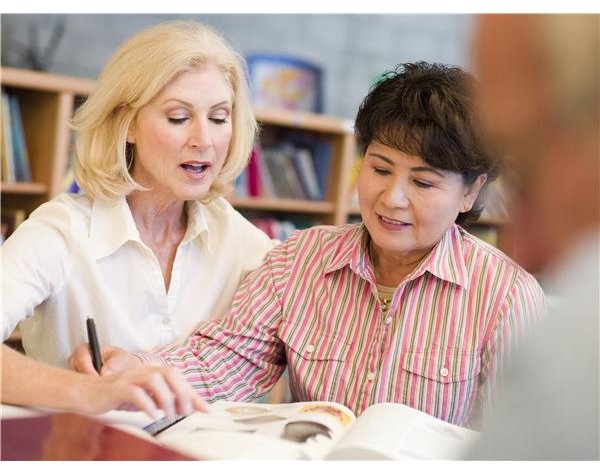Characteristics of Adult Learners or Non-Traditional Students in College
Non-traditional students make up a large percentage of the college population. Non-traditional students fit into an array of categories. For 40% of this group they are part time students. Another 40%, with some overlap are two year college students. More than half of non-traditional students make up a group called adult learners.
One would think that the term adult learner would be easy to define, but the definition can actually vary depending on what school you are attending. For some institutions it is any student who graduated from a certain year, or for some it is any student of a certain age. Some schools define an adult learner as anyone who has transferred from a different college, even if they are technically the same age as a traditional student.
Regardless of the specifics, it is useful to determine who an adult learner is as they often differ in many ways from traditional students, and have different needs.
General Characteristics of Adult Learners
Many characteristics of adult learners lump them into the category of non-traditional student. First, many of these individuals have delayed entering for several years after graduating high school. The reasons for delay vary are based on student. They also often attend school only part time, as opposed to the traditional full time status (twelve or more credits per semester undergrad and nine or more credits per semester grad school).
Many non-traditional students work full-time in addition to going to school, which is why they are frequently part-time students and take a lot of evening classes. They are almost always considered independent in regards to financial aid. Some of these learners have GEDs rather than high school diplomas.
According to the website World Wide Learn, the greater population of adult learners consists of women. More specifically it consists of women who are at least thirty-five years old. Many of these women are also single mothers. They tend to mostly be Caucasian, which often includes Latinas. Only second to this group are married women in the same full time work status with children. Currently there are more women than men in both the categories of Associates and Bachelor’s degrees. Women are also slowing catching up to men in regards to Doctorates.
Learning Characteristics
There are many differences between traditional students and adult learners. R.I.T. Learning Online reports that adult learners are problem centered. They often times will pick classes and work to succeed at them as long as they fit into their lifelong goals, where traditional students often work to succeed in the subjects regardless of their goals. Adult learners are also result oriented. If they are not seeing results, they will leave school because their participation in learning is not required of them, where for many traditional students they are expected by family to be in school.
Adult learners tend to be self-directed; they do not need to seek direction educationally from adults in their lives. They can be skeptical about new information and want to test a theory before believing it. In comparison to traditional students, they are more apprehensive about the information that challenges what they already know. Adult learners go after education based on their needs, often they have a specific goal in mind and they have worked it into their current life situation. Traditional learners may not always have a clear goal in mind like an adult learner. Lastly, adult learners are more apt to accepting responsibility for their own learning.
Teaching Strategies
Educators should adjust their teaching strategies to better meet the needs of adult learners. R.I.T suggests some of the following things to help make lifelong learners more comfortable and teaching them easier:
-
Many adult students have knowledge and experience. Using them as resources and asking open ended questions can better engage them in the class.
-
Adults already come into school with opinions, values, and beliefs. Allow course expectations room for debate when it comes to these opinions.
-
Adults expect to come into the class and be treated as such. Make sure as an educator you respect and value their opinions.
-
Do not go into the class expecting them to welcome your ideas and concepts with open arms. They need to feel self directed, engage them to help design their learning. Since many adult learners are problem centered not subject centered, show them how new concepts and ideas can be added to their current solution.
-
Adults tend to be less interested in survey courses. Instead, focus theories on relevant problems.
-
Lastly, make sure to use a variety of teaching strategies that fit the varied learning that comes with older students.
References
- Back to School for Adult Learners http://www.worldwidelearn.com/education-advisor/indepth/adult-learners-online.php
- Characteristics of Adult Learners - http://wallacecenter.rit.edu/tls/characteristics-adult-learners
